Leaning trike single-shock suspension revisited
The previous blog post considered a design with two shock absorbers:
https://bkhome.org/news/202310/tyre-scrubbing-on-trike-with-dual-shock-suspension.html
And before that, a single-shock-absorber design was considered:
https://bkhome.org/news/202310/tyre-scrubbing-on-trike-with-suspension.html
The single-shock design is simple, so decided to revisit it. But, a major rethink of the dimensions.
I found this video useful:
https://www.youtube.com/watch?v=4vtOcou_qXQ
...he rejected the single-shock design, but I have figured out the
coordinates such that it looks like the best option considered so far. I
do not need the extreme lean that he wants for his velomobile; my trike
will be trundling along at around 25km/h maximum speed, no fast
cornering.
Here is the SolveSpace design:
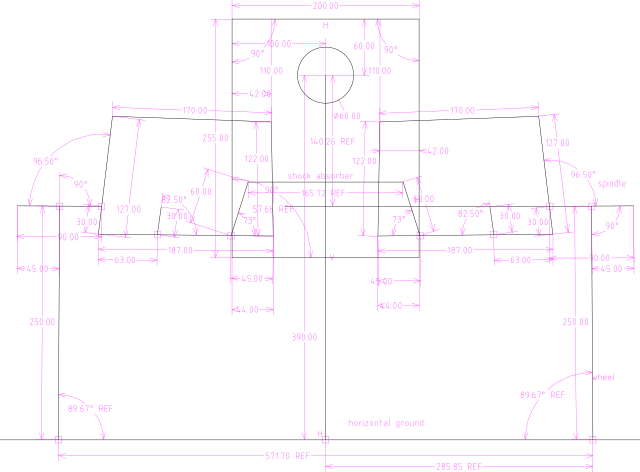
The SolveSpace file, with false ".gz" appended, is here.
I decided on a 165mm shock absorber. Reason is, there is a vendor on
Aliexpress that sells 165mm shocks with a range of spring strengths.
From memory, I think from 350 pounds to 1500 pounds. They are just
coils, without any air or oil dampening; don't know if that will cause
the front of the trike to bounce around excessively. Have no idea what
spring strength will be best; most of the weight of the trike will be
toward the back, so a lighter spring is probably going to be the best
choice.
As before, a graph showing scrubbing when both wheels hit a ripple on the road:
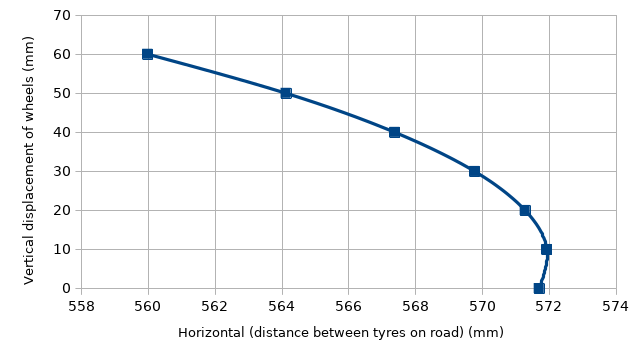
...I optimized for small ripples. A 20mm vertical deflection of the
wheels has negligible scrubbing. 30mm has 2mm scrubbing, which is 1mm
per wheel.
This next image shows how much the rider can lean into a corner. The
limit is that the inner-mounting of the lower-wishbone will touch the
side of the shock absorber. But, 64 degrees, that is, 26 degrees off
vertical, seems like plenty:
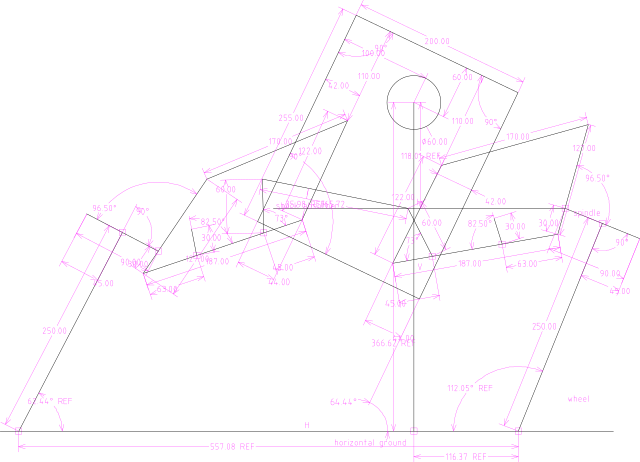
...see those 60mm struts supporting the shock absorber; the length
could be increased if more lean is wanted. The above diagram is probably
not the same as the true situation when cornering; haven't taken into
account the extra weight of the trike while cornering causing the
shocker to compress, which should increase the ground distance between
the wheels a little bit.
One thing we do not want, is to fall sideways when the trike is
stationary. It will be hard-limited anyway, to 64 degrees. But, we
really want for the trike to stay vertical. Nominal vertical stability
while stationary is achieved due to the front tyres being a fixed
distance apart. In this situation, this diagram shows what happens if
there is a slight lean:

...the slight lean causes the shock absorber to compress. In the
above diagram, it has compressed about 2mm. Thus, the trike should stay
upright; "touch wood".
As stated, suspension has been optimised for small bumps. This also
applies to one wheel hitting a bump, for example, a 25mm (1 inch) bump. I
simulated it by increasing the radius of the right-side wheel:
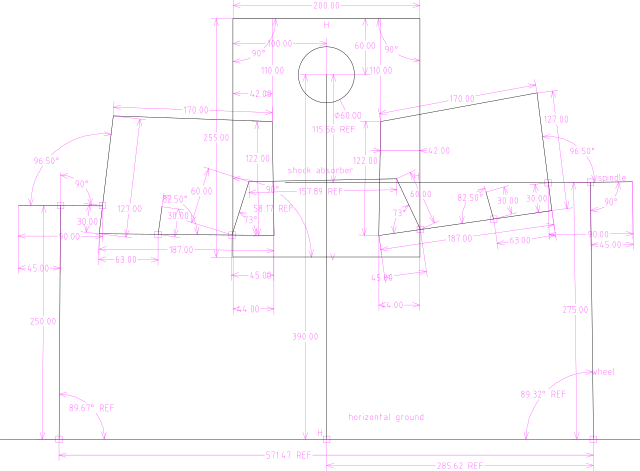
...no scrubbing. Test a 2 inch bump:
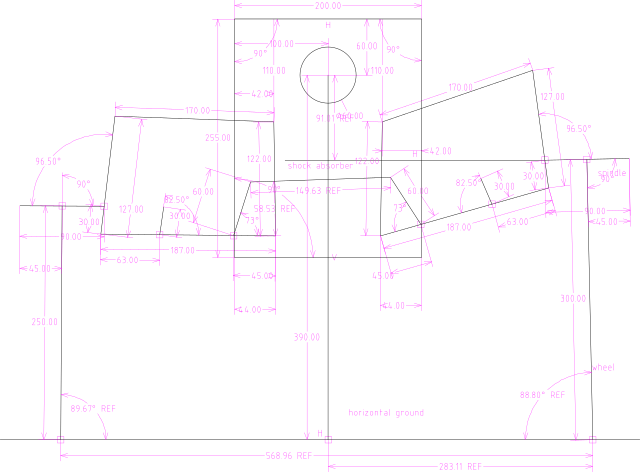
...about 2mm scrubbing. Now hit a massive 4 inch rock:
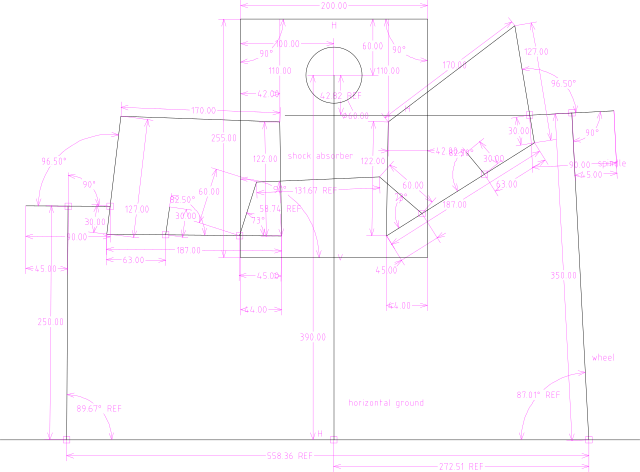
...the shock absorber is getting close to it's compression limit.
Tags: light
